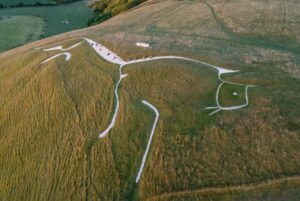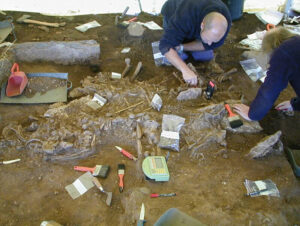Ancient humans were prone to interbreeding with genetically diverse species, new research shows — even with hominids that looked very different.
That means the genes of modern humans don’t come from just one branch of evolution, as many anthropologists have long believed.
After analyzing the genomes of nearly 300 living people, researchers found that we descended from at least two populations that co-existed in Africa for a million years, according to a new study published in Nature last week.
“There is no single birthplace,” Eleanor Scerri, an evolutionary archaeologist who was not involved in the new study, told The New York Times. “It really puts a nail in the coffin of that idea.”
The new study was prompted by the extremely high genetic diversity of a certain group of people indigenous to southern Africa. Those people are the Nama, and the fact that their genetic makeup is so distinct from most modern humans indicates their ancestors could have split from the rest of the human family tree long ago.
That happened about 120,000 to 135,000 years ago, the researchers found. Still, the genetic variation in H. sapiens suggests our species consisted of two or more genetically distinct human populations before that.
The variation could result from hundreds of thousands of years of this interbreeding, the researchers found.

A Nama woman, in Namibia’s Kalahari desert. Photo: Luca Galuzzi via Wiki Commons
Just how much interbreeding was there?
The new research also blows a hole in a recent theory that early Homo sapiens interbred with archaic species like Homo naledi — whose striking, simian features include an elongated jaw and large eye sockets.
Despite the supposedly ubiquitous interbreeding, H. naledi would have raised eyebrows in the circle around the convivial campfire. The hominid relative looked glaringly different than they did, LiveScience pointed out.

A Homo naledi skull. Photo: Wiki Commons
“It is interesting that the new study does not find support for such interbreeding, since we know from paleoanthropology that our likely ancestors coexisted with anatomically archaic-looking forms, such as the populations represented by the Kabwe skull and H. naledi,” Carina Schlebusch, a population geneticist at Uppsala University in Sweden who did not take part in the research, told LiveScience.
Meanwhile, differences between the interbreeding hominid species would have appeared “almost as [small] as…between contemporary human populations,” study co-senior author Simon Gravel said.
Sure, the sexual landscape was different back then — it was the Pleistocene! But on the other hand, maybe it wasn’t as different as we think.






